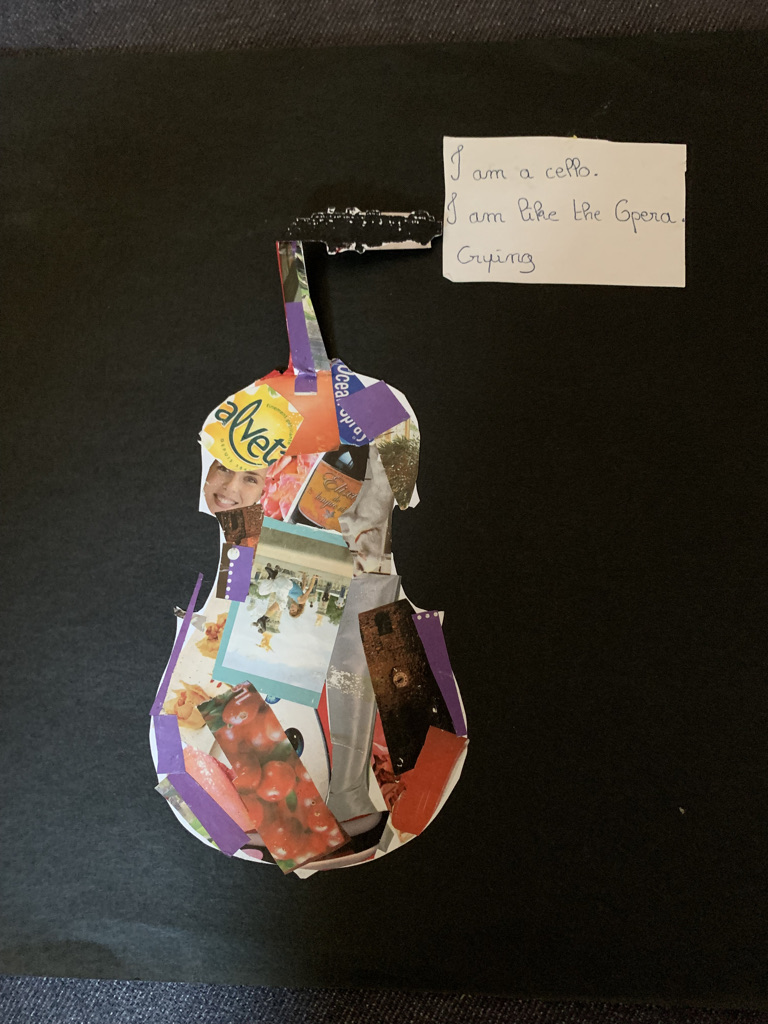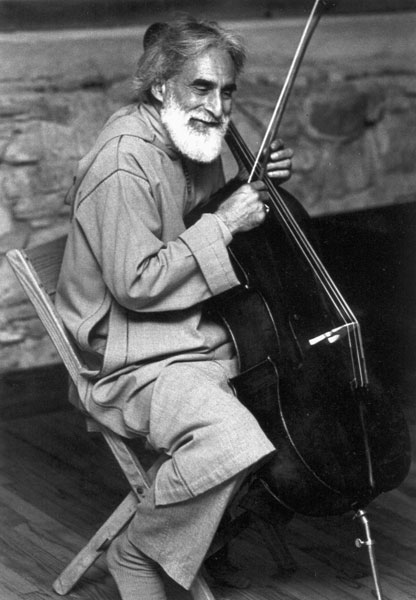 or those of you who read my previous post, “mayors and cellos,” you may remember that I had a dream I went into a bakery and asked for a tart at the extreme right of the display case. I used the phrase “extrème droite,” which, as in the States, refers to a political orientation. I had never used the phrase for any other purpose, and certainly not in ordering tarts!
or those of you who read my previous post, “mayors and cellos,” you may remember that I had a dream I went into a bakery and asked for a tart at the extreme right of the display case. I used the phrase “extrème droite,” which, as in the States, refers to a political orientation. I had never used the phrase for any other purpose, and certainly not in ordering tarts!
A French friend wrote the following: She said she would not say, l’extrême droite, to locate the tart, but “I would like la tarte la plus à droite.” (The tart the furthest to the right.) Happily, we can banish l’extrème droite from the bakery!

THE CELLO
As I was organizing my papers to begin a part-time teaching position at a small liberal arts college, here in Rochester, I found the prettiest collages French students had made of instruments. Here’s a photo of a cello collage on black paper. The accompanying words are, “I am a cello. I am like the Opera. Crying.” And I knew that I wanted to write more about the cello and about Pir Vilayat, our neighbor in Suresnes, France, where we lived for many years.
PIR VILAYAT INAYAT KHAN
Pir Vilayat, (born in England in 1916 and died in Suresnes in 2004), was a renowned figure, an innovator in the field of Sufi meditation, who also played the cello. When I saw the word, “crying,” associated with the cello in the collage, it seemed like such a poignant image, because I associate the word crying with him also, not that I ever saw him cry, but because he had a lifetime of grieving for his sister Noor, who died in a concentration camp, shot at Dachau. This grief was something he really never overcame.

Pir Vilayat immersed himself in his library on the third floor of his family home, where he wrote his many books on meditation. Their home was a beautiful manor built by a so called minor noble, who had his coat of arms inscribed in a stained -glass window downstairs in the drawing room. The home belonged to Fazil Mai Egling, who invited the Khan family to live there. Not only the house, but the roof had a lot of history: it was where Pir kept his falcon; it was where the Nazis had positioned their cannons. On the rare occasions when Pir could be enticed to leave his office, and descend the sweeping stairs to the drawing room, sometimes he would speak about Noor.

JOY AND SORROW
He said it was difficult for him to enjoy his food, since she had to subsist on potato peel soup. And it was difficult for him to enjoy walking because she had been chained. Of course, what she did was heroic, being a radio transmitter reporting from France to England on the whereabouts and plans of the collaboration government, also called the Vichy government, headquartered in Vichy, France. But her heroism didn’t overcome his sorrow. Pir remembered a conversation he and Noor had had together about how to respond to Hitler’s rise. They decided to fight: Pir in the British Navy and Noor in the Special Services Operation headquartered in London. That he survived and that she did not, was completely unacceptable to him. She died on September 13, 1944, sixty years before her brother. He always carried that sadness, but he also expressed a profound joy. In fact, Pir’s father, Hazrat Inayat Khan who brought Indian Sufism to the west, once remarked that, “joy and sorrow are for each other;” in other words, intimately linked. And part of that joy certainly belonged to his playing the cello.

Pir Vilayat had two renowned teachers, Pablo Casals and Nadia Boulanger, among others. I don’t know the extent of their relationships but Pir Vilayat spoke of them both with reverence and gratitude. And through his teachers, we come to understand a glimpse of what the cello must have meant to him.
PABLO CASALS
Pablo Casals, born in Spain, (1876-1973) is one of the most widely respected cellists of all time. When he was thirteen (13!) in 1890 in a second-hand music shop in Barcelona, he found an amazing thing: Let Wikipedia reveal what he found: “a tattered copy of Bach’s six cello suites. He spent the next 13 years practicing them every day before he would perform them in public for the first time.[9]Casals would later make his own version of the six suites.”
Now, as my own students would say, “Wait, what?” These cello suites are believed to have been written between 1717 and 1723. And, somehow, they languished, virtually unknown, thought to be mere exercises, for hundreds of years? And one of the world’s greatest cello players stumbled upon them? (You can’t make this stuff up!) Pablo Casals was the first to record all six suites, in Paris, music for the cello which is thought to be some of the most profound music for the instrument.
I wish I had asked Pir Vilayat about this. But I really didn’t know much about the cello until Pir played it for us. And other cellists, of course, have also recorded these. I have versions from Yo Yo Ma and Rostropovich and also Pablo Casals. Here is Pablo Casals. The clip begins in French, telling us about the small village of Prade in the Pyrenees, and pointing out Casals sheltering under his umbrella. Then we have the language of music where no translating is needed.
.
Coincidentally, Pir Vilayat had a home in the Pyrenees, and I wonder if he met Casals there. And also, coincidentally, something I just learned, after having titled this section “Joy and Sorrow,” is that there’s an autobiography written by Casals himself called, Joys and Sorrows: Reflections by Pablo Casals, which came out in 1970. Casals struggles were in part political with his beloved Spain besieged by Franco. Perhaps there was a resonance there between the two musicians.
NADIA BOULANGER
Pir Vilayat was always eager to share the fact that he studied with Nadia Boulanger. I was happy for him that he so enjoyed his teacher. My piano teacher was named Sister Thomas Marie, and I wasn’t all that enthusiastic, but I was happy for him. I never did admit that for one piano recital I sat down with my hands a couple of keys off from where they should have been. I played the entire piece like that. Ouch. The parents applauded, and Sister Thomas Marie just shook her head.
So, I thought recently, let me see what’s what about Mme Boulanger. Well, it turns out that she was the first woman to conduct the London Philharmonic Orchestra, the first to conduct the NY Philharmonic at Carnegie Hall. I’m like, “Oh. Where have I been?” (And many of you, dear readers, are right there along with me.) Did I mention that she taught many of the leading musicians and composers of the twentieth century?
Born in Paris in 1887 and died in 1979, she was one of the most influential teachers of music in the twentieth century. She had an unusual life: her father, a brilliant musician, was 72 when she was born; she had a beloved younger (!) sister Lili who won the coveted Prix de Rome but died quite young, unlike Nadia’s own long life. (Similar in a way to Pir Vilayat’s experience.) She was renowned for teaching harmony and analysis.
Here is a composition of hers, for cello, the instrument played by her grandfather.
Three pieces for cello
Here is an actual lesson.
And here is a second lesson. This analysis is superb, and not for the faint of heart!
And thus concludes our homage to the cello on behalf of Pir Vilayat.
GODOT
One of the things I so appreciate about the play is that it quietly invokes the pain of World War II. The word “godot” could well refer to military footwear, made by Alexis Godillot (1816-1893).
Good boots were a treasure to a soldier and the boots we have in the play do not fit well! Not to mention the absurdity of the war that the world had just been through. Joys and sorrows abound here too.
(When the actor Roger Blin asked Beckett what Godot represented, Beckett responded that the name came to him in association with slang words for shoes, for feet play a preponderant role in the play.)
« Quand Roger Blin lui demanda qui ou ce que Godot représentait, Beckett répondit que ce nom lui était venu par association avec les termes d’argot « godillot, godasse », les pieds jouant un rôle prépondérant dans la pièce1.
And just because Yo Yo Ma was born in Paris and we heard him there, and he happens to be playing the same suite as Casals, I thought you might enjoy listening to him. Any thoughts about how the two compare?